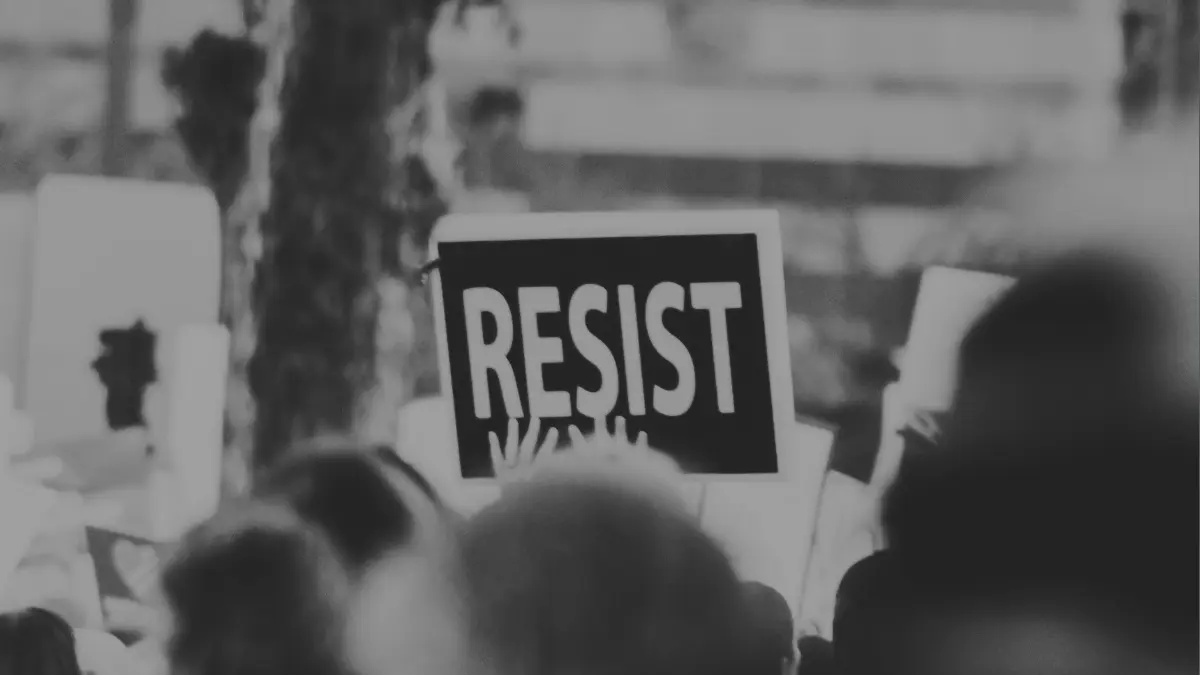Table of Contents
Think of historic grassroots activism in civil rights, environmental justice, or workers’ rights movements – people, not positions, made them powerful.
Grassroots activism is a movement built from the ground up. It’s when individuals – everyday people – come together to push for progress, rather than waiting on institutions or political leaders to lead the way.
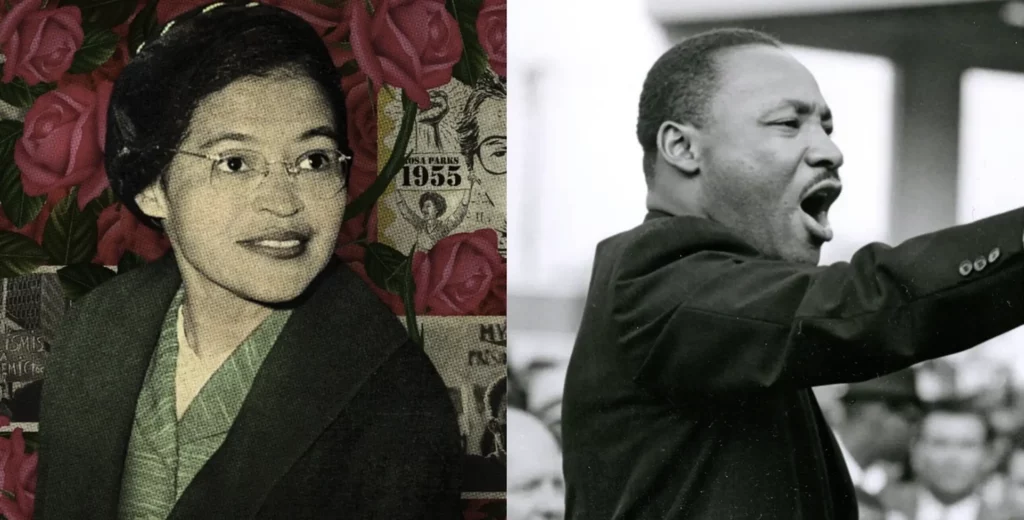
During the 1950s and 1960s in the United States, Martin Luther King Jr. and Rosa Parks led the Civil Rights Movement. A movement that brought together thousands of people to stand up against racial discrimination and segregation.
Through peaceful protests like boycotts, marches, and sit-ins, the movement led to significant legal and social changes, including the Civil Rights Act of 1964 and the Voting Rights Act of 1965.
Unlike the traditional lobbying or institutional advocacy, grassroots movements are powered by:
- Bottom-up organizations: In grassroots campaigns, strategy starts at the street level. It’s the community that sets the direction, not an external authority. This ensures decisions are grounded in lived realities and reflect what truly matters to the people involved.
- Volunteer-driven participation: It’s not about where decisions come from – it’s about who makes them happen. Grassroots campaigns thrive on people stepping up daily, contributing their skills, making the movement resilient, resourceful, and representative.
- Personal connection to the cause: Participants are often directly affected by the issue, which drives authentic engagement and long-term commitment.
- Authentic voices: Messaging comes from real experiences rather than polished PR, which helps make the voices resonate far beyond the immediate community.
Read more about grassroots mobilization: your first guide to spark change.
How grassroots activism works
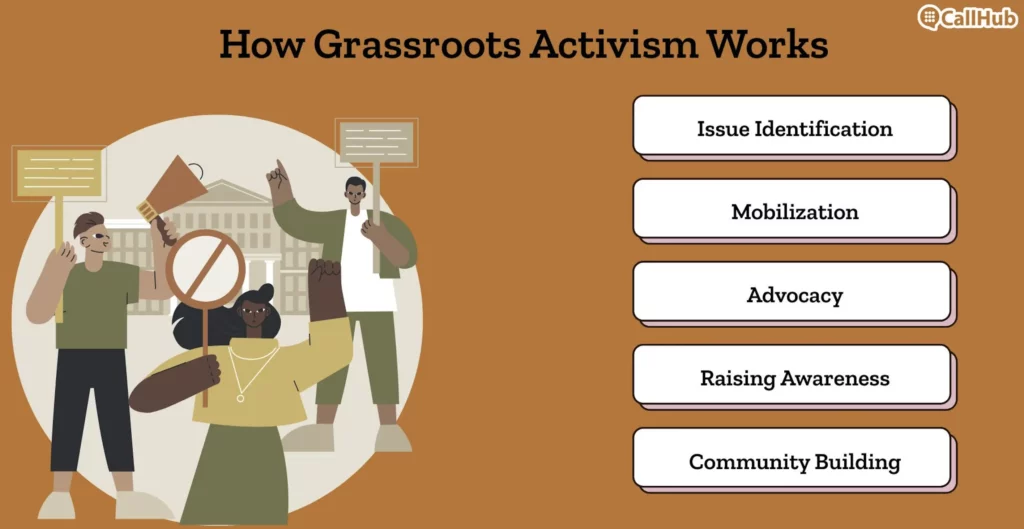
Grassroots activism is all about everyday individuals coming together to create powerful, bottom-up change. Here’s how the journey unfolds, step by step:
Issue identification:
Grassroots activism starts when people in a community recognize a problem that directly affects them, whether it’s unfair laws, environmental concerns, or lack of access to basic services. This step clearly defines what needs to change and why it matters.
Mobilization:
Once the issue is clear, the next step is getting people involved. Mobilization means encouraging your community, friends, neighbors, and others to take action. This can include forming local groups, organizing meetings, or sharing information through social media or word of mouth. The goal is to gather support and build momentum.
Advocacy:
Advocacy is all about making sure the right people hear your voice. That could mean writing a letter to your local representative, speaking up at a town hall meeting, or even sitting down with a school official or company leader. Activists often organize petitions, start campaigns, or rally others to demand better policies. It’s about showing up and saying, “This matters, and we won’t stay quiet.”
Raising awareness:
More people need to know what’s happening for real change. That’s where raising awareness comes in. Activists do this by hosting events, sharing personal stories, posting on social media, or talking to journalists. The goal? To get people to care, connect, and take action.
Community building:
At the heart of any movement is community. Activists focus on creating spaces where everyone feels welcome, valued, and heard. It’s about supporting each other, lifting each other, and building something bigger than just one voice. This kind of togetherness keeps the momentum going even when progress feels slow.
To understand the best grassroots activism methods, read here.
Blueprint for launching a grassroots activism campaign.
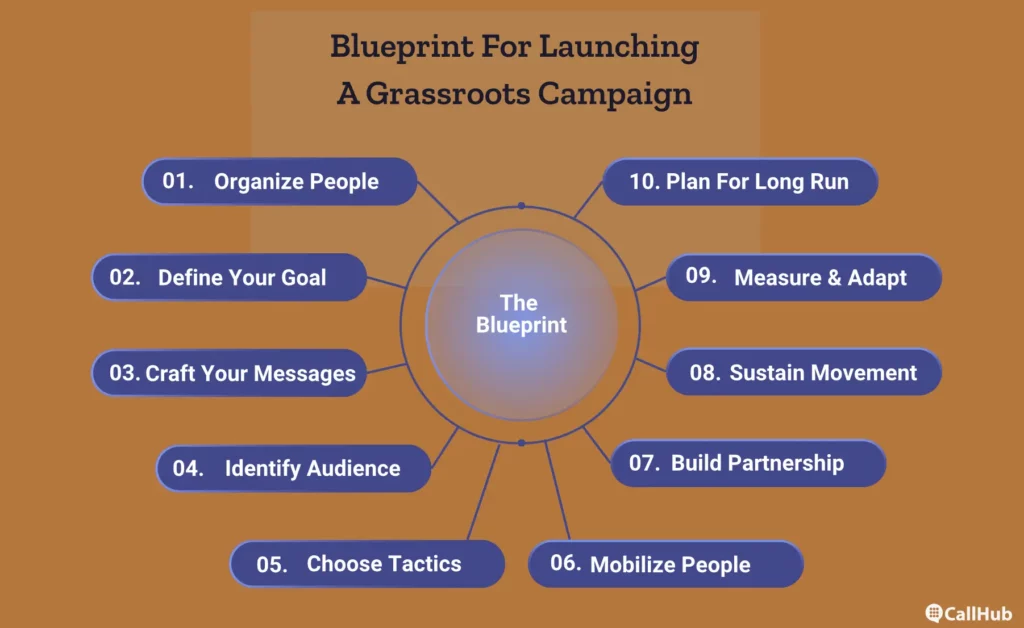
Successful grassroots activism doesn’t start with a viral tweet or end with a petition. It starts with people – and a plan. Here’s a blueprint to help your campaign go from spark to a sustained movement.
1. Organize your people.
Start by gathering a core group of committed individuals who care deeply about the issue. Identify strengths, assign roles, and build a foundation of trust and shared purpose. This inner circle becomes the driving force of your campaign.
2. Define your goal.
Be clear about what you want to achieve. Is it changing a law, stopping a development project, or raising awareness about a local issue? A focused, specific goal helps direct your energy and measure your success.
3. Craft a message that moves.
Once your base is in place, it’s time to articulate your message to make it resonate personally and reflect the lived experiences of those you’re mobilizing. Keep it clear, concise, and community-driven. Use real stories. Be authentic and remember – message consistency across platforms is key.
Your message should explain:
- What problem exists?
- Why it matters.
- How collective action can create change.
- What specific vision are you working towards?
When a message feels real, people pay attention and take action.
4. Identify your audience.
Who must you influence – voters, local leaders, media, or a specific community? Tailor your message and outreach efforts to speak directly to the people who can make a difference.
5. Choose your tactics.
Pick the right mix of actions to reach your goals, including door-to-door canvassing, social media campaigns, phone calls, text messages, petitions, protests, community events, or contacting decision makers. You can be creative and flexible with your approach. Use a mix of outreach channels and strategies to reach your audience.
6. Mobilize your people.
Turn your support into action. Rally your team and the broader community to show up – online and in-person. Make it easy for people to get involved by offering clear steps, resources, and encouragement.
7. Build partnerships.
Connect with local organizations, faith groups, schools, or other grassroots movements. Partnerships can amplify your voice, share resources, and increase legitimacy.
8. Sustain the movement.
Keep your team motivated with regular check-ins, wins (big or small), and shared stories of progress. Offer training, celebrate milestones, and support each other during setbacks. Long-term change takes time, and strong morale is key.
9. Measure and adapt.
Track what’s working and what’s not. Use feedback and data to improve your strategy and stay focused on your goal. Be willing to pivot if needed.
10. Plan for the long run.
Think beyond the campaign. How will you maintain momentum and continue advocating once the immediate goal is met? Lay the groundwork for ongoing community engagement and leadership development.
Real impact: Grassroots activism heroes driving global change

The 2025 Goldman Environmental Prize honored seven grassroots activists worldwide who’ve led bold campaigns to protect their communities and the planet, often at significant personal risk. Their victories range from jailing corrupt officials to halting destructive infrastructure projects and securing legal rights for the natural ecosystem.
Grassroots activism highlights include:
| • Semia Gharbi from Tunisia, who exposed an illegal waste trafficking network, leading to 42 arrests and the return of 6,000 tonnes of trash from Italy. • Carlos Mallo Molina from Spain, who stopped the construction of a massive port in Tenerife that threatened a vital marine reserve by rallying public support and using creative educational tools. • Laurene Allen from the US led a grassroots campaign that resulted in the closure of a toxic plastics plant and helped push for the country’s first federal standards on harmful PFAS chemicals. |
These stories are a powerful reminder of what ordinary people can do when they refuse to stay silent. This activism highlights the grassroots power growing stronger when communities organize smartly and act swiftly.
Read Also: Digital-First Grassroots Movements Are The Future: Learn How
Circling back to the blueprints for launching the grassroots campaign, organizations these days are going “tech-savvy” on activism. Take MN350 and PCS, for instance:
How CallHub supports grassroots activism
1. MN350 climate strike campaign – text messaging campaign
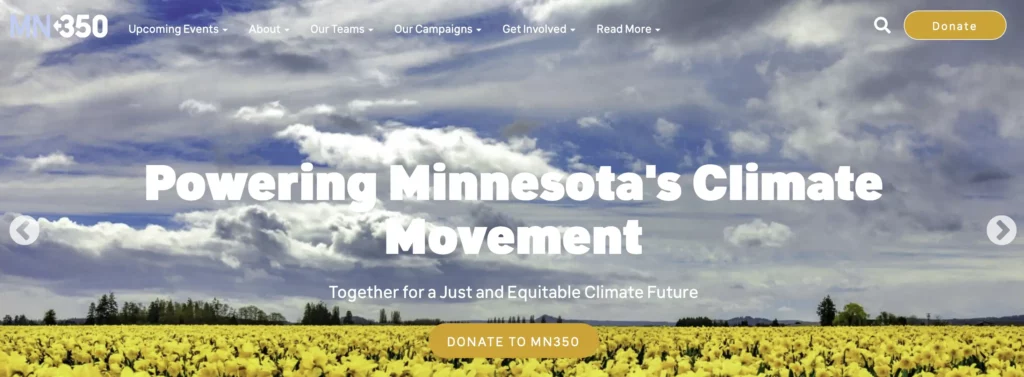
When the Minnesota climate justice organization MN350 pushed for bold climate legislation, they needed people. Lots of them. And not just any people, but young, passionate activists who cared about the climate and were ready to act.
Inspired by the Women’s March, MN350 adopted CallHub’s SMS tools to launch a targeted and effective text messaging campaign. Here’s how it worked:
- Opt-in simplicity: At a rally of 6,000+ people, speakers and signs promoted a short code (text MNSTRIKE to 33339), resulting in 2,929 attendees opting in via SMS (which was half the crowd).
- A good follow-up strategy: Automated follow-ups capture data like school, grade, and location, which is vital for segmenting the list into targeted groups such as city-based vs. suburban high schoolers.
- Peer-to-peer texting: Volunteers sent conversational, one-to-one style texts to recruit organizers, resulting in over 22% positive responses.
- List segmentation: Lists were segmented and reassigned easily when volunteers weren’t available, ensuring no message went undelivered.
- Local mobilization: Ahead of the December 6th strike, targeted reminders helped coordinate multiple events across cities—over 10% of recipients committed to showing up.
- Sustained activism: Beyond rallies, SMS helped recruit for art builds, petition drives, and sit-ins, creating ongoing, low-barrier opportunities to stay involved.
Using text messaging not just for broadcasts, but as a tool for two-way communication, MN350 turned casual supporters into committed activists, proving that digital mobilization can drive meaningful, on-the-ground change.
Learn how MN350 leveraged CallHub’s text messaging tools to organize the climate strike.
2. PCS – Union petition power move – P2P texting
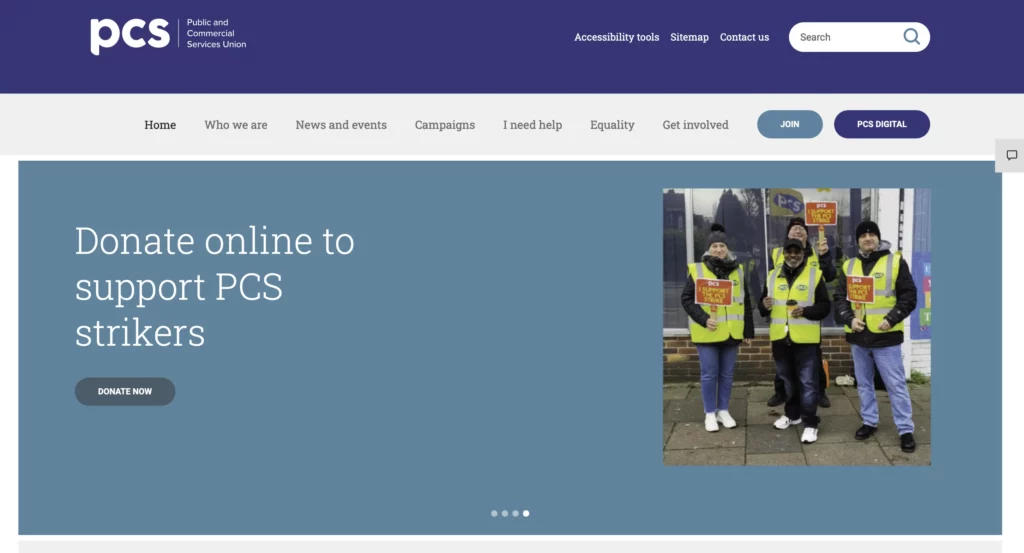
When the UK entered lockdown during the COVID-19 pandemic, one thing became clear – essential workers, including civil servants, form the backbone of society. Yet, despite their crucial role, many continued to face unfair compensation.
The Public and Commercial Services Union (PCS) launched a campaign to push for fair pay for UK civil servants. To bring the matter to the parliament, they needed 100,000 signatures on a petition.
With 60,000 signatures gathered in the early weeks through phone calls and emails, the progress came to a stall. Deadline loomed with 40,000 still to go. The team needed a faster and more scalable solution.
The breakthrough came when PCS turned to peer-to-peer texting. With 98% open rates and opened within 3 minutes, PCS organized a “Super Saturday” texting drive, training over 200 volunteers on Zoom to manage outreach using CallHub’s platform.
On the day of the campaign, volunteers sent thousands of personalized texts, and thanks to CallHub’s interface, 10,000 new signatures were secured within one day! The following week, they crossed the 100,000 mark, triggering a parliamentary debate on 14 December 2020.
Why peer-to-peer texting worked:
- Real-time tracking: Volunteers could see how each response moved the needle, motivating them as the numbers climbed.
- Saved replies: FAQs were answered instantly without typing the same message repeatedly.
- Multi-chat interface: Volunteers could manage several conversations simultaneously, improving response time.
- Personalization: Even large-scale messages felt personal, and first names were already inserted, making members feel seen.
| Martyn Cook from PCS: “We needed to contact a high volume of people very quickly. Peer-to-peer texting lets us do that while keeping the communication personal and effective.” |
Learn more about how the PCS union used P2P texts to reach 100,000 petition signatures.
Final thoughts:
Grassroots activism will always be about people, but remember that your outreach and retention today depend on the tools you use.
If you have made it this far (we’re going to take that as a “yes, I liked the blog,” Then you probably get it: organizing people is hard work, and keeping them engaged? Even harder.
That’s where CallHub steps in – we are here not only to provide guidance but with the right tools to make volunteer outreach feel less like a slog and more like a movement.
Explore the tools that get your bases fired up and start with CallHub today.
